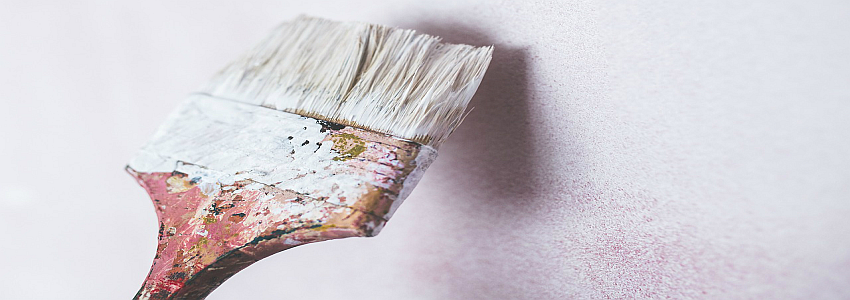To start renovating interior walls, you will need to know where to start, what you need, what are the steps you need to follow and other important tips. If you skip any of these steps, your work will be in vain, because soon you will see imperfections on walls and you’d have to start again. On the other hand, you can hire a contractor to help you in this regard, and you will have the certainty that you let someone who knows what they’re doing handle the renovation.
How to prepare the room before you renovate interior walls
You decided to renovate your home either because you already needed a change or you can no longer stay in the said room because the walls are cracked and the paint looks awful. Whatever the reason, the decorating begins with plastering walls and painting them, and then you can thing about furniture and accessories. How to start? From where? It should be clear that painting walls just is not enough to cover cracks or holes left by the nails, so you will start the renovation with plastering the walls and then painting them.
To achieve the best results so the effort was not in vain, and you won’t have to deal with wall renovations for many years, you need to know what the proper steps are for wall renovations.
First, you will need workspace, so you have to create it by taking out all the objects that can be removed from. The rest of the furniture (bed, closet, large objects) can be moved in the middle of the room and covered with plastic film to avoid being soiled. You also need to remove all electrical outlets and switches, and then apply tape over the wires. Absolutely all objects in the room must be covered, including lighting fixtures, radiators and more.
If you decided on a certain kind of design namely you thought of not to paint all the walls, then cover the adjacent areas of the walls to be painted. You can stick plastic using adhesive tape. In addition, the floor must be protected especially if you have parquet on the floor.
After you have covered the objects in the room, you will need to wash the walls using a special solution for this (usually trisodium phosphate) protecting your hands with gloves, then you must use water to wash the walls.
The next stage is the coating cracks, holes and other imperfections with plaster. Also, where it’s necessary, it’s possible to use fiberglass mesh covered with plaster, to prevent cracks.
After the plaster has dried, you must polish the walls with fine sandpaper. This process will result in being very dusty, so be sure to wear a dust mask to prevent inhalation of dust particles. Dust should be removed from the room because the room must be ready for the next stage: painting the walls.
How to paint interior walls
The process begins by applying the primer with a brush then paint is pored into a tray, in small amounts. Use a paint roller to get the paint from the tray and make sure you remove excess paint.
One very important thing that you have to consider is the order in which the walls are painted. Normally you should start with painting the ceiling, then paint the walls, and finally, if necessary, paint the floor. The ceiling is more difficult to paint, because you have to climb on something and sit in uncomfortable positions. Painting the ceiling begins with painting the edges with a brush, then you paint the entire ceiling with a paint roller. To avoid uncomfortable positions mentioned above, use a paint roller with a handle so you are able to paint the ceiling standing on your feet, or you can use a ladder. Wait for the paint on the ceiling to dry, and then you can start painting the walls.
As with the ceiling, begin by painting the edges of walls, about 2-3 cm from where the walls meet the ceiling and areas where the doors and windows are, using a brush. It’s better to apply the paint in diagonal stripes and then uniform it from top to bottom. If you work on a wall, finish it before starting to work on a new one. It’s best to apply glossy paint on small areas, because it’s easier to work with it this way.
Painting windows and doors
Windows and doors are painted starting from the bottom. Use some tape on the windows, to make sure you don’t get paint on them by accident. For this process use a brushes and apply paint on small areas, gradually reaching the whole area.
Regarding painting doors, proceed the same way. If the door is fitted with double-glazing, interior panels are painted first then proceed to paint the entire door from top to bottom.
If you want to remodel your home by making small upgrades or if you want to add a fresh look to your entire house, don’t hesitate to contact Good Deal Remodeling. Our experienced team is able to provide high quality services for interior and exterior home remodeling projects in Philadelphia and in the Philadelphia area.

